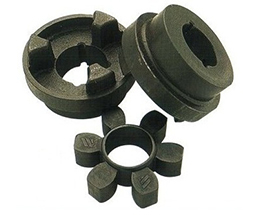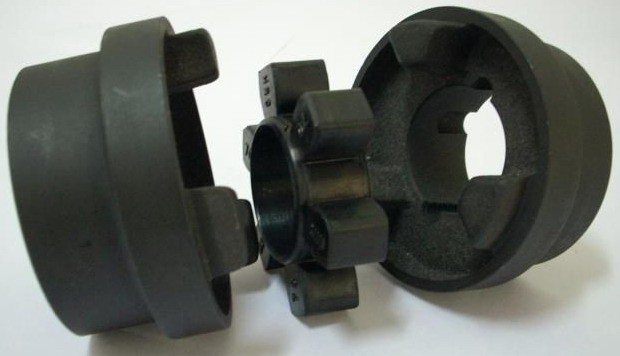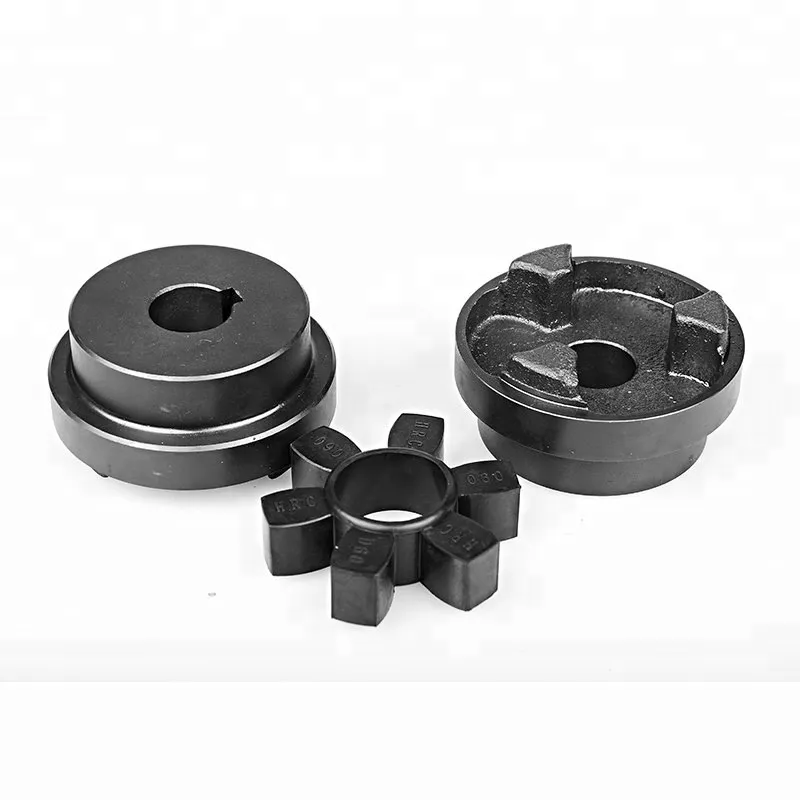Product Description
OEM Service HRC GR NM KC Shaft Coupling
KC Chain Couplings:
| Product Name | KC roller chain coupling |
| Material | C45 steel |
| Part Number | KCL3012-KC24026 |
| Surface Treatment | Hardening teeth |
| Bore size | Available |
| Size | Standard & Custom |
Main Products:
1. Timing Belt Pulley (Synchronous Pulley), Timing Bar, Clamping Plate;
2. Forging, Casting, Stampling Part;
3. V Belt Pulley and Taper Lock Bush; Sprocket, Idler and Plate Wheel;Spur Gear, Bevel Gear, Rack;
4. Shaft Locking Device: could be alternative for Ringfeder, Sati, Chiaravalli, Tollok, etc.;
5. Shaft Coupling: including Miniature couplings, Curved tooth coupling, Chain coupling, HRC coupling,
Normex coupling, Type coupling, GE Coupling, torque limiter, Universal Joint;
6. Shaft Collars: including Setscrew Type, Single Split and Double Splits;
7. Gear & Rack: Spur gear/rack, bevel gear, helical gear/rack.
8. Other customized Machining Parts according to drawings (OEM) Forging, Casting, Stamping Parts.
Packaging & Shipping:
All the products can be packed in cartons,or,you can choose the pallet packing.
MADE IN CHINA can be pressed on wooden cases.Land,air,sea transportation are available.UPS,DHL,TNT,
FedEx and EMS are all supported.
Company Introduction:
Factory View:
Exhibition:
Certification:
FAQ:
1. MOQ
A: Generally, 1 pc for standard parts; contact for nonstandard parts.
2. Delivery Time
A: In stock: within 5 working days. Out of stock: depends on your order quantity.
3. How To Select
A: part number or drawing, catalogue. If no, you can send us your sample, so we can make the drawing and sample accordingly.
4: What is the Warranty for your products?
A:Normally our warranty is 1 year.
Contacts:
/* January 22, 2571 19:08:37 */!function(){function s(e,r){var a,o={};try{e&&e.split(“,”).forEach(function(e,t){e&&(a=e.match(/(.*?):(.*)$/))&&1
| Standard Or Nonstandard: | Standard |
|---|---|
| Shaft Hole: | 19-32 |
| Torque: | 10-30N.M |
| Bore Diameter: | 19mm |
| Speed: | 4000r/M |
| Structure: | Flexible |
| Samples: |
US$ 0.1/Set
1 Set(Min.Order) | |
|---|
| Customization: |
Available
| Customized Request |
|---|


Can HRC Couplings Handle Misalignment Between Shafts?
HRC (Highly Resilient Coupling) couplings are designed to handle a certain degree of misalignment between shafts, making them suitable for applications where alignment issues may arise. These couplings can accommodate both angular and parallel misalignment to some extent, providing flexibility and resilience in mechanical systems.
The flexibility of HRC couplings is primarily due to their construction, which typically includes a flexible element made of rubber or other elastomeric materials. This flexible element sits between two metal hubs and absorbs misalignment by allowing a certain degree of movement.
There are generally two types of HRC couplings based on their ability to handle misalignment:
- Single Flex HRC Couplings: These couplings can accommodate angular misalignment but have limited capability to handle parallel misalignment. They are suitable for applications where angular misalignment is more prevalent.
- Double Flex HRC Couplings: These couplings are designed to handle both angular and parallel misalignment to a greater degree than single flex couplings. They offer increased flexibility and can handle more demanding misalignment conditions.
It is important to note that while HRC couplings can handle misalignment, they do have limits. Excessive misalignment beyond their specified range can lead to premature wear and failure. It is essential to follow the manufacturer’s guidelines and ensure that the coupling is properly installed and aligned to prevent unnecessary stress on the flexible element.
For applications with significant misalignment or where precise alignment is critical, other types of couplings like flexible couplings with elastomeric elements, gear couplings, or disc couplings may be more suitable. Engineers and designers should carefully assess the misalignment requirements of their specific application and choose the appropriate coupling type accordingly.

Can HRC Couplings Be Used in Applications with Varying Operating Temperatures?
Yes, HRC couplings can be used in applications with varying operating temperatures. The choice of materials used in the manufacturing of HRC couplings allows them to withstand a wide range of temperatures, making them suitable for diverse industrial environments. Here’s how HRC couplings handle varying operating temperatures:
1. Material Selection: HRC couplings are typically constructed using high-quality materials such as cast iron, steel, and a flexible rubber element. These materials are selected for their excellent thermal properties and ability to maintain their structural integrity across a broad temperature range.
2. Temperature Resistance: The rubber element in the HRC coupling is designed to resist temperature extremes. It remains flexible and resilient even in high or low-temperature conditions. This flexibility is essential for the coupling’s ability to accommodate misalignment and dampen vibrations effectively.
3. Thermal Expansion: When machinery operates at higher temperatures, components can undergo thermal expansion. HRC couplings can handle the slight misalignment caused by thermal expansion, thanks to their flexible rubber element. This feature prevents additional stress on the connected shafts and bearings, reducing the risk of premature failures.
4. Lubrication-Free: Unlike some other types of couplings that require lubrication for smooth operation, HRC couplings are designed to be lubrication-free. This is advantageous in applications with varying temperatures because lubricants may experience changes in viscosity and performance at extreme temperatures. The absence of lubrication simplifies maintenance and ensures consistent coupling performance regardless of temperature fluctuations.
5. Application Versatility: Due to their temperature resistance and ability to handle misalignment, HRC couplings find applications in a wide range of industries and equipment, including pumps, compressors, conveyors, and various types of machinery that operate in environments with varying temperatures.
In summary, HRC couplings are well-suited for applications with varying operating temperatures. Their robust construction, temperature-resistant materials, and ability to handle misalignment make them a reliable and versatile choice for power transmission in different industrial settings, regardless of temperature fluctuations.

Explanation of Different Types of HRC Coupling Designs
1. HRC Standard Design: The standard or classic HRC coupling design consists of two cast iron hubs with a spider made of an elastomeric material, usually rubber. The hubs have teeth on the inner surface that mesh with the spider, providing torque transmission and flexibility. This design is commonly used in various industrial applications due to its simplicity and cost-effectiveness.
2. HRC Spacer Design: The HRC spacer coupling design is similar to the standard HRC design, but it includes a spacer between the two hubs. The spacer allows for more axial misalignment compensation and can accommodate longer distances between shafts. This design is suitable for applications where additional spacing between the shafts is necessary.
3. HRC Flywheel Design: The HRC flywheel coupling design is specifically used in applications where the coupling is mounted on a flywheel. The design incorporates a flywheel mounting hub on one side and a standard HRC hub on the other side. This allows the coupling to be easily connected to a flywheel for various engine-driven machinery.
4. HRC Taper Lock Design: The HRC taper lock coupling design includes taper lock bushings that enable easy installation and removal of the coupling from the shaft. The hubs have a tapered bore, and the taper lock bushings are inserted into the bore, providing a secure and precise connection to the shaft. This design is commonly used in applications that require frequent coupling removal and reassembly.
5. HRC Brake Drum Design: The HRC brake drum coupling design is used in applications where a brake is required. The design incorporates a brake drum on one of the hubs, allowing the coupling to serve both as a torque transmitting coupling and a brake drum for braking purposes. This design is commonly used in industrial machinery where controlled braking is necessary.
6. HRC Non-Spacer Design: The HRC non-spacer coupling design is similar to the standard HRC design but does not include a spacer. This design is suitable for applications where the shafts are relatively close together, and a spacer is not required for additional misalignment compensation.
7. HRC Stainless Steel Design: The HRC stainless steel coupling design is used in applications where corrosion resistance is essential. The hubs and spider are made of stainless steel, providing better resistance to rust and corrosion. This design is commonly used in industries such as food processing, marine, and pharmaceuticals.
8. HRC Pilot Bore Design: The HRC pilot bore coupling design is supplied with plain bore hubs, allowing the end-users to machine the bore to the required size. This design is beneficial when the shaft sizes are not standard or need to be customized for a specific application.
Overall, these different HRC coupling designs offer flexibility and versatility to suit various power transmission requirements across different industries.


editor by CX 2024-03-12
by
Leave a Reply